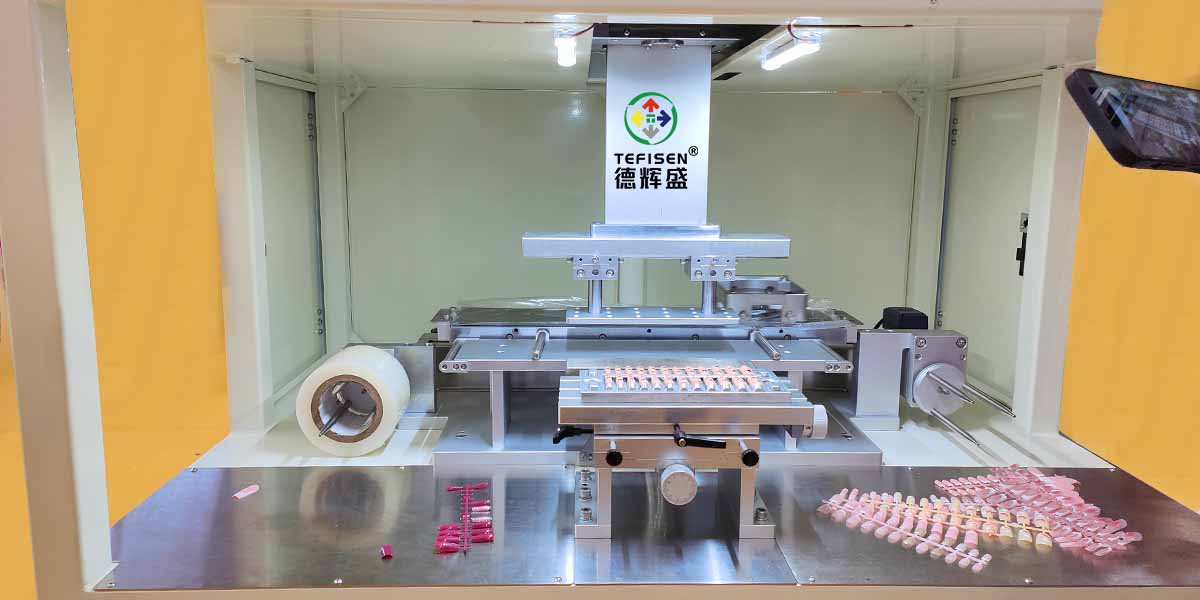Nail Art Printer Machine: Revolutionizing Personalized & Efficient Nail Art Production
As a precision printing equipment specifically designed for the nail art industry, the nail art printer machine's core function lies in accurately transferring various patterns, texts, or colors onto nails, thereby facilitating rapid customization and mass production of nail art. With the growing popularity of nail art culture and the increasing demand for personalization, the nail art printer machine plays an increasingly vital role in the market. It not only simplifies the nail art creation process, improves production efficiency, but also significantly enriches the diversity and creativity of nail designs.

I. Importance of Nail art printer machine
In the nail art industry, the importance of the nail art printer machine is self-evident. It enables nail technicians and salons to swiftly respond to customers' personalized demands, quickly printing out one-of-a-kind nail patterns to fulfill their aesthetic pursuits. Meanwhile, in commercial production, this machine has become a crucial piece of equipment for large-scale production of high-quality nail products. Through its automated and efficient printing process, it reduces production costs and enhances market competitiveness. Furthermore, with the rise of e-commerce platforms, the nail art printer machine facilitates the seamless integration of nail products between online and offline channels, further expanding the boundaries of the nail art market. Thus, it can be said that the nail art printer machine is one of the essential driving forces behind the development of the nail art industry.
II. Overview of Nail art printer machine
Basic Concept: The nail art printer machine is a specialized printing equipment based on the principle of pad printing technology. Pad printing is an indirect printing method that utilizes a soft rubber pad (also known as the pad printing head) as a medium to transfer ink from an etched plate onto the surface of the object to be printed. For nail design applications, the pad printing machine has undergone numerous optimizations tailored to its unique requirements and characteristics, such as higher printing precision, faster ink drying speeds, and easier operation.
Types and Specifications: Depending on production scale, functional requirements, and applicable scenarios, nail art printer machines can be categorized into small, medium, and large models. Small pad printing machines are typically suitable for individual workshops or small nail salons due to their small footprint and simplicity of operation. Medium-sized machines are more appropriate for medium-sized nail salons or production enterprises, capable of meeting certain levels of batch production needs. Large pad printing machines, on the other hand, cater to large-scale production enterprises or high-end customization markets, offering higher production efficiency and stronger customization capabilities.
Main Components: The key components of a nail art printer machine include the ink pot (open/sealed), ink cup, pad printing head, printing plate, and ink system. The ink pot stores and regulates the ink supply to ensure stable ink delivery. The ink cup evenly applies ink to the printing plate. The pad printing head, as the pivotal part of the printing process, precisely transfers the pattern from the printing plate onto the nail. The ink system directly impacts the printing quality, with a high-quality system ensuring vibrant colors and long-lasting durability.
III. Working Principle
Ink Supply System
Open Ink Pot System: In this system, ink is stored in an open container and delivered to the vicinity of the pad printing head through natural gravity or auxiliary pumping mechanisms. Excess ink is scraped off the pad printing head by a fixed blade located at the edge of the ink pot, ensuring an even and appropriate amount of ink on the head's surface. This system is suitable for applications with high ink consumption and low requirements for ink exposure.
Sealed Ink Cup System
In contrast, the sealed ink cup system provides better protection against contamination and oxidation, extending ink shelf life. Ink is enclosed within a specialized cup and dispensed onto the pad printing head through a precisely controlled pumping mechanism. The scraping process is equally meticulous, ensuring precise ink control and transfer efficiency. This system is ideal for scenarios requiring high ink quality and complex working environments.
Pad Printing Process
The pad printing head first descends onto the printing plate surface, gently contacting and absorbing the ink pattern. It then rises to a designated height, maintaining the integrity and clarity of the ink pattern through precise mechanical or pneumatic control. Subsequently, the pad printing head moves above the nail, accurately transferring the ink pattern onto it. This process requires the pad printing head to make contact with the nail at an appropriate force and precise position to ensure complete pattern transfer and undamaged nail contact.
IV. Operation Process
Pre-operation Preparation
Comprehensively inspect the equipment status to ensure all components are functioning normally; properly install the printing plate and adjust it to the optimal position; prepare an appropriate amount of ink and thinner, ensuring that the ink performance meets the printing requirements.
Operating Steps
- Open the air valve and power switch to start the equipment, and proceed with preheating or initialization.
- Adjust the speed of the pad printing head as needed, and verify the printing quality through test prints.
- Accurately place the nail art into the mold to ensure stable positioning.
- Initiate the pad printing program, observe the printing process, and ensure that the ink pattern is accurately transferred onto the nail art.
- Immediately remove the nail art after completion of the pad printing, and proceed with necessary post-processing or quality inspections.
Precautions
During the operation, it is imperative to wear protective equipment such as gloves and goggles to prevent injury from ink or equipment components. Avoid contact of hands or other non-operating parts with moving components to ensure operational safety. Additionally, regularly maintain the equipment, clean ink residues, and keep the work environment tidy to prolong equipment lifespan and enhance printing quality.
V. Application Examples and Detailed Analysis of Nail Art Market Prospects
A) Application Examples of Nail art printer machines:
The innovation and development of the nail art industry are inseparable from the support of advanced technologies. Among them, the widespread application of technologies such as nail art printer machines has significantly propelled the progress of the industry. Taking the nail art printer machine as an example, it has demonstrated its unique advantages in multiple application scenarios.
V. Application Examples and Detailed Analysis of Nail Art Market Prospects
A) Application Examples of Nail art printer machines:
The innovation and development of the nail art industry are inseparable from the support of advanced technologies. Among them, the widespread application of technologies such as nail art printer machines has significantly propelled the progress of the industry. Taking the nail art printer machine as an example, it has demonstrated its unique advantages in multiple application scenarios.
1. Personalized Customization: Nail salons can quickly provide customers with personalized nail decorations through nail art printer machines, such as printing customers' names, birthdates, or favorite patterns onto nails. According to statistics, after adopting nail art printer machines, the efficiency of personalized services in nail salons has increased by approximately 80%, and customer satisfaction has also significantly improved.
2. Mass Production: For nail product manufacturers, nail art printer machines enable large-scale production while maintaining the precision and consistency of patterns. After introducing nail art printer machines, a medium-sized nail product factory increased its production efficiency by 50%, with monthly output rising from 500,000 pieces to 750,000 pieces, effectively reducing production costs.
3. Cross-Industry Collaboration: Nail pad printing technology is also widely used in fashion, entertainment, and other fields. For instance, a well-known brand collaborated with a nail art brand to print brand logos and limited-edition patterns onto nails, which were then sold in limited quantities, quickly attracting the attention of numerous fans and consumers. This cross-industry collaboration not only enhanced the brand image but also boosted the sales of nail art products.
B) Market Prospect Analysis
1. Global Nail Salon Market Size
According to MMR reports, the global nail salon market size was USD 12.86 billion in 2023 and is projected to reach USD 22.18 billion by 2029, with a compound annual growth rate (CAGR) of 8.1%. Nail salons are mostly small businesses that employ or contract with trained professionals to provide nail services to customers, including but not limited to nail filing and polishing, artificial nail application, and other hand and foot care treatments. These establishments have become popular destinations for individuals seeking to improve the appearance and health of their nails. They offer a dedicated space where customers can receive various nail treatments, including manicures, pedicures, nail extensions, nail enhancements, hand and foot massages, exfoliation, and spa treatments, to enhance the overall customer experience. Furthermore, they provide a wide range of options to beautify and maintain the appearance and health of nails, catering to the needs of both women and men. Among users, those aged 19 to 26 account for up to 48% of the nail salon market share.
2. Market Growth Drivers for Nail art printer machines
1) Market Growth Drivers
• Technological Innovation: Technological advancements in nail art printer machines, such as the increase in built-in computer printer varieties, have made DIY nail art more convenient and personalized. This technological innovation not only satisfies consumers' demand for unique nail designs but also drives rapid market growth.
• Changes in Consumer Behavior: The pandemic has accelerated the formation of self-care and beauty routines among consumers, particularly the rise of in-home beauty trends. Consumers are increasingly inclined to perform nail care at home, directly boosting the demand for home care devices like nail art printer machines.
• Social Media and Influencer Effect: The influence of social media platforms and influencers cannot be overlooked. By sharing nail designs, tutorials, and experiences, they significantly enhance the popularity of nail services, thereby driving the growth of the nail art printer machine market.
2) Target Market Segmentation
• Age Groups: Particularly the young demographic aged 19 to 26, who account for 48% of the nail salon market share, have a high pursuit of novel and personalized nail designs and are more likely to embrace new technologies and products. Therefore, they are the primary target customer group for nail art printer machines.
• Gender Diversity: Nail art is no longer exclusive to women; men are gradually joining the consumer base for nail services. The nail art printer machine market should consider this trend and offer products and services suitable for both genders.
3) Regional Market Differences
• Asia-Pacific: Due to the increase in disposable income and the growth in the number of salon and spa centers, the Asia-Pacific region serves as the primary driver for the nail art printer machine market. The region's high demand for nail services and DIY nail art, along with its rapid adoption of new technologies and beauty trends, makes it a market with enormous growth potential.
• European Market: Europe also occupies an important position in the nail art printer machine market, with its consumers' pursuit of quality and design driving the demand for high-end nail art printer machines.
4) Future Trends
• Home-Based Trend: As consumers' interest in self-care and DIY beauty increases, the home-based nail art printer machine market will continue to expand. Products should prioritize portability, ease of use, and design personalization.
• Digitization and Intelligence: Future nail art printer machines will emphasize digitization and intelligence, such as remote control and design customization through mobile apps, as well as leveraging AI technology to provide personalized nail art suggestions.
• Sustainability: Environmental protection and sustainability will become essential trends in the nail art printer machine market. Manufacturers need to focus on eco-friendly materials, energy consumption, and recyclability to meet consumers' demands for green consumption.
In conclusion, the nail art printer machine market is experiencing rapid growth, driven by technological innovation, changes in consumer behavior, social media influence, and regional market differences. In the future, with the reinforcement of home-based, digitization, and intelligence trends, as well as the prevalence of sustainable development concepts, the nail art printer machine market will usher in broader development prospects.

